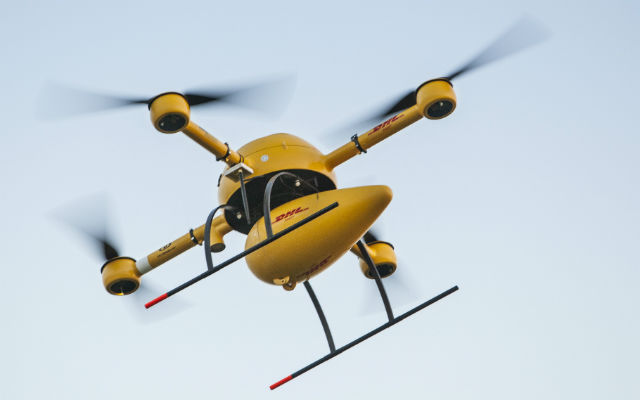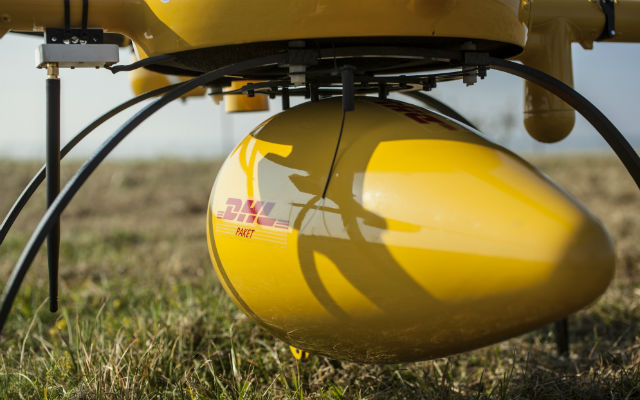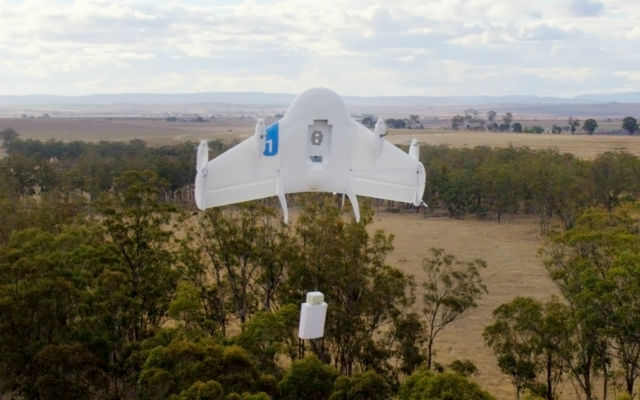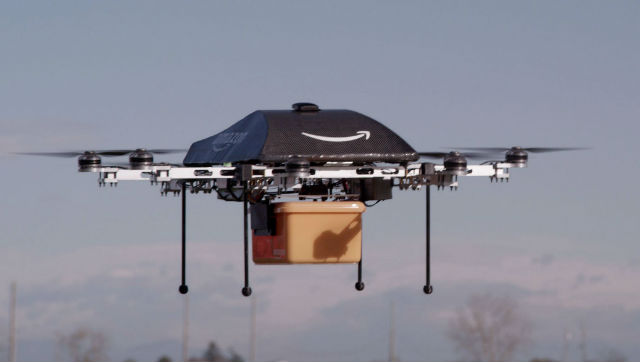German postal service DHL Parcel is to begin testing the delivery of supplies using its Parcelcopter unmanned air vehicle, marking the first operation of a UAV in European airspace beyond line of sight.
The company – owned by Deutsche Post – first flew the vertical take-off and landing (VTOL) Parcelcopter in December 2013, when it travelled across the river Rhine in Bonn.
DHL has been working alongside the institute of flight system dynamics at RWTH Aachen University and VTOL UAV manufacturer Microdrones, which derived the Parcelcopter from its md4-1000 system.

Deutsche Post DHL

Microdrones
A restricted flight area for the UAV has been established by the German ministry of transport and digital infrastructure in coordination with Deutsche Flugsicherung – the company in charge of air traffic control in the country. This flightpath covers some 6.5nm (12km) of the North Sea from the city of Norden to the island of Juist.
The route will enable the team to test the UAV under harsh conditions. The testing is due to take place over “several months”, and each individual flight will be registered, according to the team.
The carbonfibre Parcelcopter can reach speeds of 35kt (65km/h) while 160ft above sea level. It will be used to deliver medication and urgent supplies to residents of the island during the test phase.
The flight to Juist and back would be fully automatic by means of pre-programmed GPS waypoints, and using special landing sites. Medicines can be ordered from Seehund pharmacy on Juist, and once the project takes off, island residents will be told more about how they can place orders.

Deutsche Post DHL
“For the first time in Europe, an unmanned aerial vehicle is going beyond line of sight of the operator for a concrete commercial application,” the team says. “During these field tests, a team of specialists will monitor all activities from the ground stations. The pilots and operator will only intervene in case of a technical problem or an emergency situation.”
News of this project follows on from similar endeavours by Google and Amazon, both of which have launched UAV delivery programmes of their own.
In August, Google introduced a fixed-wing prototype under its Project Wing effort that had been in development for two years. Through its Google X research division, the company developed and tested the prototype in Australia, delivering first aid kits and food to local farmers.
Google admitted it was “years from a product”, but was satisfied with the results of the first test.


Rex Features
In December 2013, Amazon chief executive Jeff Bezos announced that the online retailer was looking to enhance its Prime delivery service with the use of UAVs. It showcased a video of a VTOL UAV that would deliver parcels to customers’ doorsteps.
Amazon went so far as to send a letter to the US Federal Aviation Administration in July calling for an exemption on current airspace restrictions so that testing could commence, but nothing tangible has come from the project yet.
Source: FlightGlobal.com













































